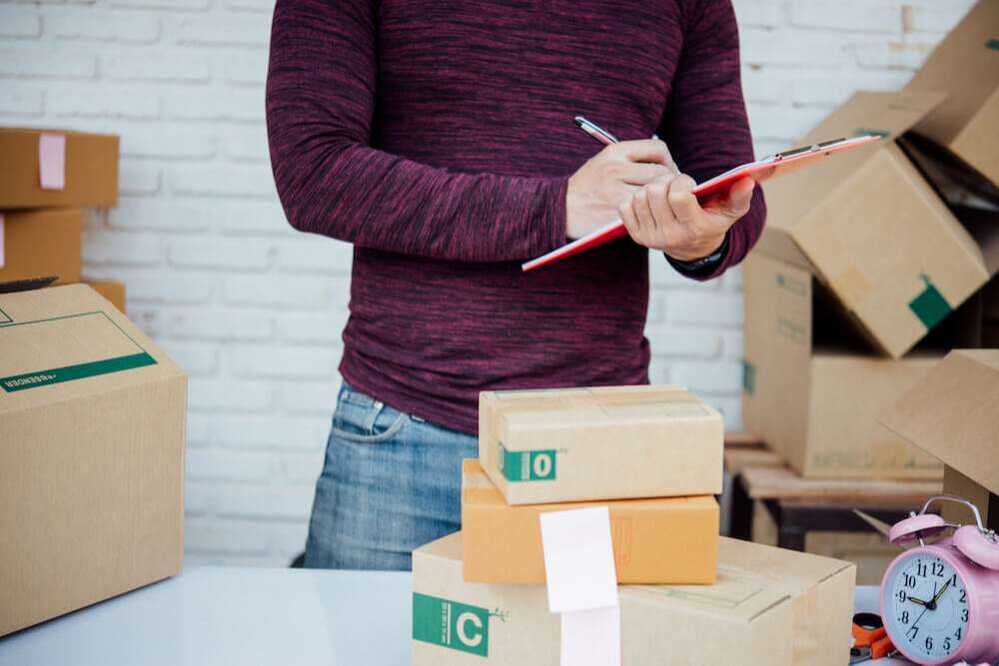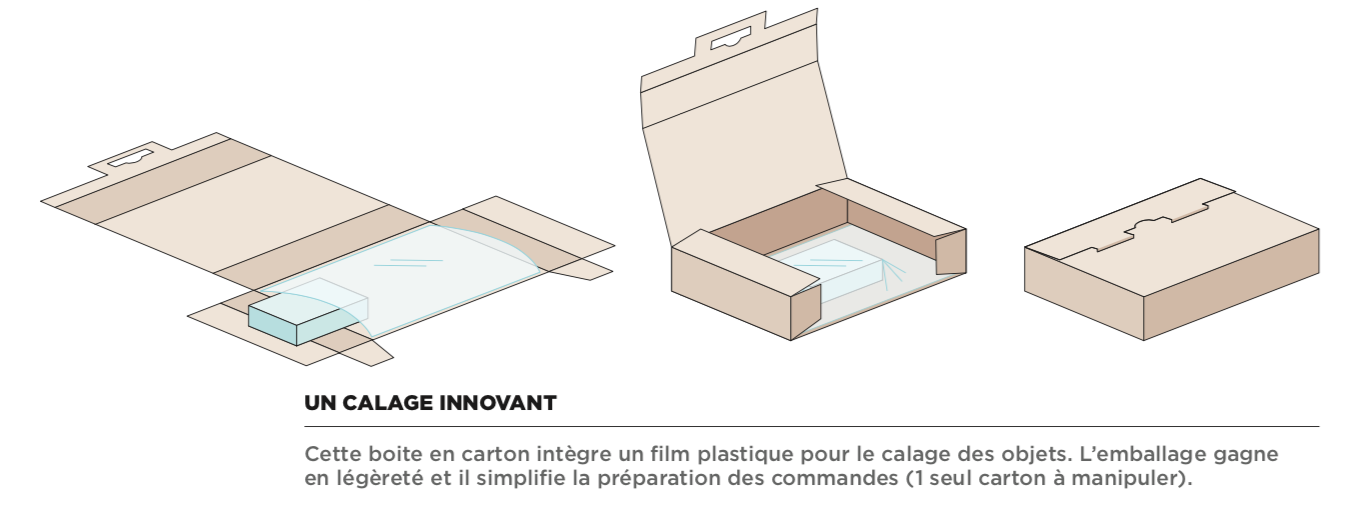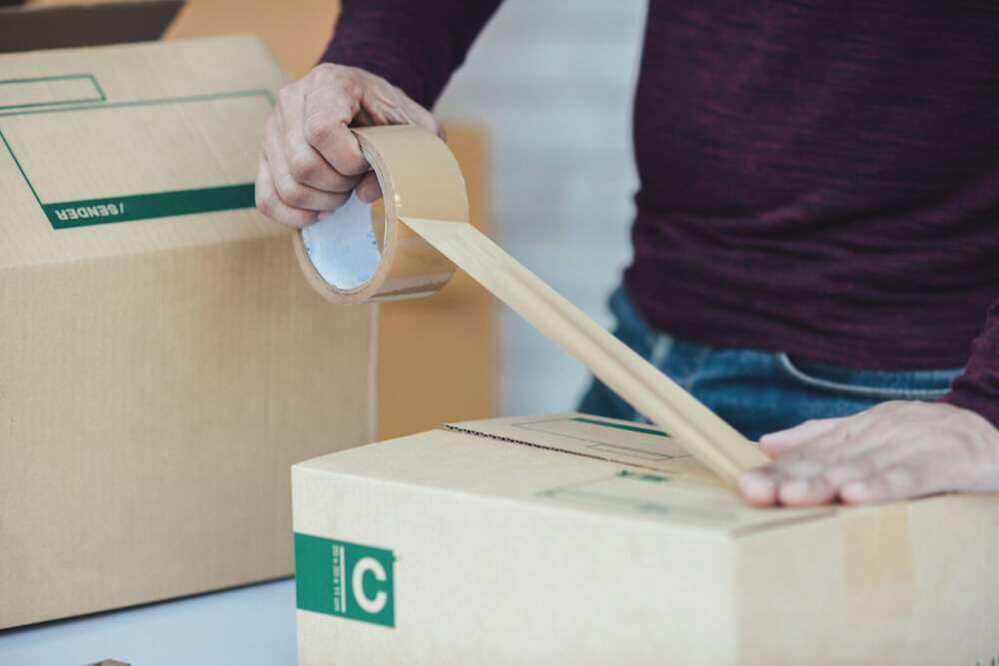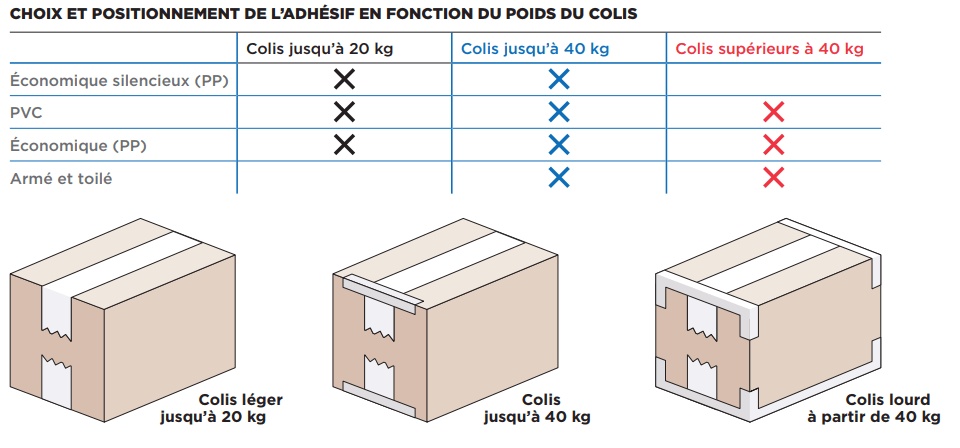According to a RAJA survey conducted in December 2018, 84% of e-retailers questioned wish to find parcel packaging solutions adapted to their logistical challenges. It is true that, when shipping goods, there are many elements to take into account: size and weight of products, wedging and suitable packaging, sealing and securing the parcel…We therefore propose a 6-step checklist to successfully pack your parcels from A to Z. The key: an optimal customer experience, thanks to a parcel in good condition and a packaging that is pleasant to open, as well asa reduction in the number of disputes with transporters and with your customers
- Step #1: Ask the right questions
- Step #2: Choose the packaging
- Step #3: Packing the product
- Step #4: Putting the product in place
- Step #5: Closing the package
- Step #6: Shipping the package

Step #1: Ask the right questions
a
-
What: what do you put in your crates, boxes or cartons?
-
Where: where are your product shipments most likely to go?
-
When: when do you need the products?
-
How: how do you intend to send it? By carrier, by post? This is a very important question, because the load breaks are more violent, and the parcel will be more damaged with the post office than with professional couriers.
-
How much: how many products should you put in the parcel?
-
Why: why do you want to use this type of box?

Etape #2 : Choisir l’emballage du colis
Cette première étape répond en partie à la question : « Que mettez-vous dans vos caisses ? » Le mauvais choix d’emballage peut avoir des conséquences néfastes sur l’état de votre colis au moment de la réception : une caisse enfoncée, abîmée, risque de décevoir le consommateur.
Pour éviter cela, vous devez penser d’une part au type d’emballage, et d’autre part à sa taille.
Quel type d’emballage choisir ?
Et vous demander quel est le produit à expédier. Cette question détermine la nature de l’emballage que vous allez utiliser. En effet, un produit fragile nécessite un emballage résistant, tandis qu’un produit de nature incassable (un pull, par exemple) pourra très bien être envoyé dans des pochettes plastiques.
Le choix est large : caisse, sachets, pochette, tube, étui, carton d’emballage postal… A vous de trouver le format idéal d ’ emballage pour à votre produit.
Il e eco-responsible packagingyou can choose from a wide range of packaging options, such as recyclable packaging, packaging made from recycled or bio-sourced materials, or reusable packaging.Expert’s tip: Also find out about the climatic conditions in which your parcel will be transported. This can have an impact on the packaging you have chosen, and even on the goods it contains. You may want to consider putting a desiccant bag in your parcel.
What size of packaging should I choose?
A well-packaged and protected parcel requires a box size that is adapted to the product
- If the box is too big, you risk either abusing the cushioning devices or having your product bump against the walls and arrive damaged.
- If it is too small, it may burst during transport.
if you choose to send your goods in a cardboard box, try our tool to find the most suitable box size for your products in one click le conseil de l’expert : Vous envoyez votre colis en express et à l’international ? Sachez qu’il sera potentiellement soumis à la facturation au poids volumétrique. Il s’agit d’une méthode de facturation qui peut rapidement faire augmenter vos coûts de transport, si vous n’optimisez pas la taille de vos emballages.
le conseil de l’expert : Vous envoyez votre colis en express et à l’international ? Sachez qu’il sera potentiellement soumis à la facturation au poids volumétrique. Il s’agit d’une méthode de facturation qui peut rapidement faire augmenter vos coûts de transport, si vous n’optimisez pas la taille de vos emballages.
 Etape #3 : Caler le produit
Etape #3 : Caler le produit
Vous avez choisi un emballage aux bonnes dimensions, assez résistant pour protéger le produit. Mais cela ne suffit pas forcément à le stabiliser dans la caisse.
Pour cela, il existe différents types de calages : papier kraft, papier bulle, coussins d’air comprimé, mousse, frisure de bois etc.
« Quand vous achetez 20 tonnes de frisure par an, cela veut dire que vous expédiez ces 20 tonnes par la Poste, colis après colis… Nous utilisons à présent des coussins d’ai once again, ask yourself what you are sending
once again, ask yourself what you are sending
- If the object is fragile, choose an effective protective packaging such as bubble wrap (some particularly thick films are very protective);
- If the item is not fragile, but is likely to be damaged by bumping into the corners of the cardboard packaging, choose a cushioning solution such as kraft paper or air cushioning.
make sure you fill in as much of the empty space in your packaging as possible.
How do you protect sensitive products?
- Electronic products are sensitive and therefore require anti-static cushioning.
- Some objects are sensitive to acidity and require PH neutral cushioning (e.g. works of art)
- Others may need to be wrapped in waterproof stretch film to protect them from the weather
- Finally, some surfaces are more likely to be scratched and require effective yet gentle protection.
discover more solutions for protecting your goods in our dedicated space.
Step #4: Place the product
There are several scenarios: you may have a single delicate product to pack, or several goods to put in the same parcel. In the latter case, you can use the objects to wedge them together according to their weight or shape: the heaviest object should be placed first, at the bottom of the box so as not to crush the others. Then distribute the other products around the heavy object and then on top. Theexpert’s advice: If your parcel contains several products (multi-products) and you wish the heaviest product to remain at the bottom, you must absolutely point out the top of the box to your carriers.
 Step #5: Close the parcel
Step #5: Close the parcel
Now that you have your product in the appropriate packaging, protected by effective wedging , you can close yourparcel
- L-shaped : for light products
- U-shaped : for heavy products or the transport of light products that will pass through several stages of transport
- Combined L and U: for the transport of heavy products over time
- H-shaped: a very secure method suitable for all products.

> Read also: Adhesives, good practices to know!
with a strapping method : strapped, the parcel is safe and will not open. This method is however suitable for delivery by a carrier and not by the Post Office, as the parcel could then get caught in the conveyors and tear.
Step #6: Send the parcel
The
you
-
On the document pocket, the recipient’s and sender’s addresses must be clearly visible, as well as the barcode of the waybill;
-
Think about the “International” or “Fragile” labels, so that the carrier can take some precautionary measures during transit.
the package is now ready to be sent. Thanks to the care taken with your packaging, the consumer should have a happyunboxing experience and recommend the company without hesitation.6 key steps to remember
- Ask yourself the right preliminary questions before packing a product: what, where, when, how… This will save you time when preparing orders.
- Think about the type and size of packaging for your parcel, taking into account the size, weight and fragility of the goods to be shipped, as well as the volumetric weight billing system, to optimise your packaging.
- Select the right cushioning system, depending on the weight and fragility of your product.
- Organise the goods inside your parcel so that they do not collide and are stable.
- Seal the package with the appropriate material: adhesive tape for postal shipments or strapping for all other types of non-mechanised shipments.
- Place the necessaryshipping labels correctly for safe transport.















